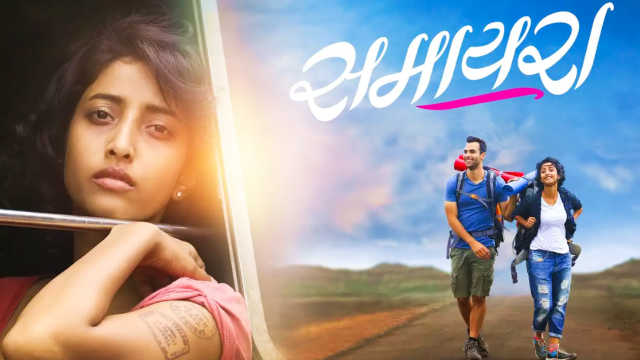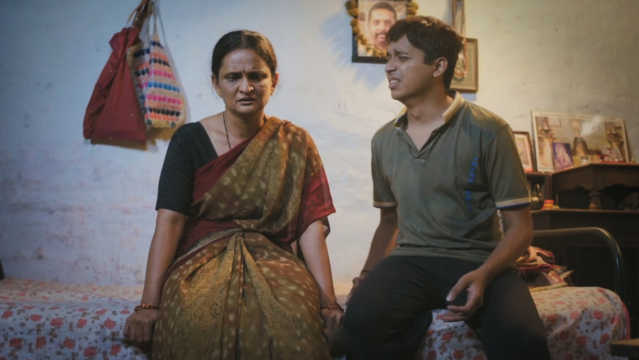
Sahil Bhalla
New Delhi, 26 May 2019 7:00 IST
Updated: 22 May 2021 16:46 IST
The unmoving sombreness of the present, coupled with the breathtaking cinematography, is the secret to the movie’s success. Director Sumitra Bhave chooses to show more than tell. The focus is on the psyche of Ramji and the viewer is drawn towards his sadness.

Veteran filmmaker Sumitra Bhave’s solo project Dithee (Seeing) is, simply put, about grief, anguish and healing. It’s about life and death. It’s about the eternal circle of life.
Dithee is based on the short story Aata Aamod Sunasi Aale by the Marathi writer DB Mokashi. On the surface, it is a simple tale about Ramji (Kishore Kadam), the village ironsmith, dealing with a loss of life.
Upon learning that his only son has drowned in a river in spate, Ramji’s world comes crashing down. He is at his most vulnerable. He is left with a pregnant wife and a prematurely born daughter. In his old age, Ramji — the man the village turns to when dealing with suffering — must grieve with the elderly folk from the village.
Ramji is a devout Warkari (one of those who undertake the annual pilgrimage from Alandi near Pune to Pandharpur near Solapur, where the deity Vitthal resides). He is not only angry at the loss of his son but also with god (Vitthal) to whom he has been devoted for many decades. Ramji questions god’s ways.

Ramji may be a man of few words, but his expressions tell you much more than mere words can. A shout-out to the masterful Kishore Kadam, whose body language speaks volumes.
Bhave chooses to show more than tell. The focus is on the psyche of Ramji and the viewer is drawn towards his sadness. The question, though, for all characters close to Ramji is, how much of his pain can they realistically share? Can they truly understand the gravity of the situation? What is weighing down his existence?
The only part of the movie that did not seem to click was the flashbacks. Ramji’s flashbacks. They seemed a little too hurried and not fully fleshed out.
It is the unmoving sombreness of the present that is the secret to the movie’s success. Couple that with the breathtaking cinematography — it is set in the monsoon — that elevates the movie to another level.
The lighting is dim, yet many of the scenes remain frozen in the viewer's mind, as possible portraits. The film uses the rainy season not just as a background score, but to add to the pain that had permeated through the village. It gives character to the gloominess. You feel you are part of the rain-soaked terrain.

Grief takes its time, as the slow pacing of the film shows, but it is the miracle of birth that turns things around for Ramji. It is this life that helps Ramji embrace the inevitability of death and the circle of life.
The film is interspersed with readings from scriptures authored by Sant Dnyaneshwar and devout songs.
One must acknowledge the members of the ensemble cast — Kishore Kadam, Mohan Agashe, Uttara Baokar, Dilip Prabhavalkar, Girish Kulkarni and others — who come together to sing, in their own voices, in one final scene. It’s a scene that Bhave had difficulties shooting. The incessant rain — or, as some would say, the background score to the movie — caused several issues with the sound. They had to re-create it within a studio.
There is a pain for heartbreak and there is a pain — the process of birthing — that results in the creation of something beautiful. It is these opposites that collapse and ultimately become one.
Dithee was screened at the 14th Habitat Film Festival at New Delhi's India Habitat Centre on Friday 24 May 2019. SonyLIV is now streaming Dithee.
Correction, 22 May 2021: An earlier version of the review said the film is based upon a novel by author DB Mokashi. Aata Aamod Sunasi Aale is a short story by Mokashi.
Related topics
Habitat Film Festival SonyLIVYou might also like

Review Marathi
Samaira review: This well-intentioned travel drama suffers from a dull script
Actor Rishi Deshpande's directorial debut doesn't rise as much as its performances. ...

Review Marathi
Goshta Arjunchi review: Triggering conversations about mental health
Anupam Barve’s short film urges people to talk to their families about what they are going...

Review Marathi
Ekda Kaay Zala review: Sumeet Raghvan impresses in a film that does not use its full potential
Directed by Dr Saleel Kulkarni, the film has a fine act by child artiste Arjun Purnapatre....

